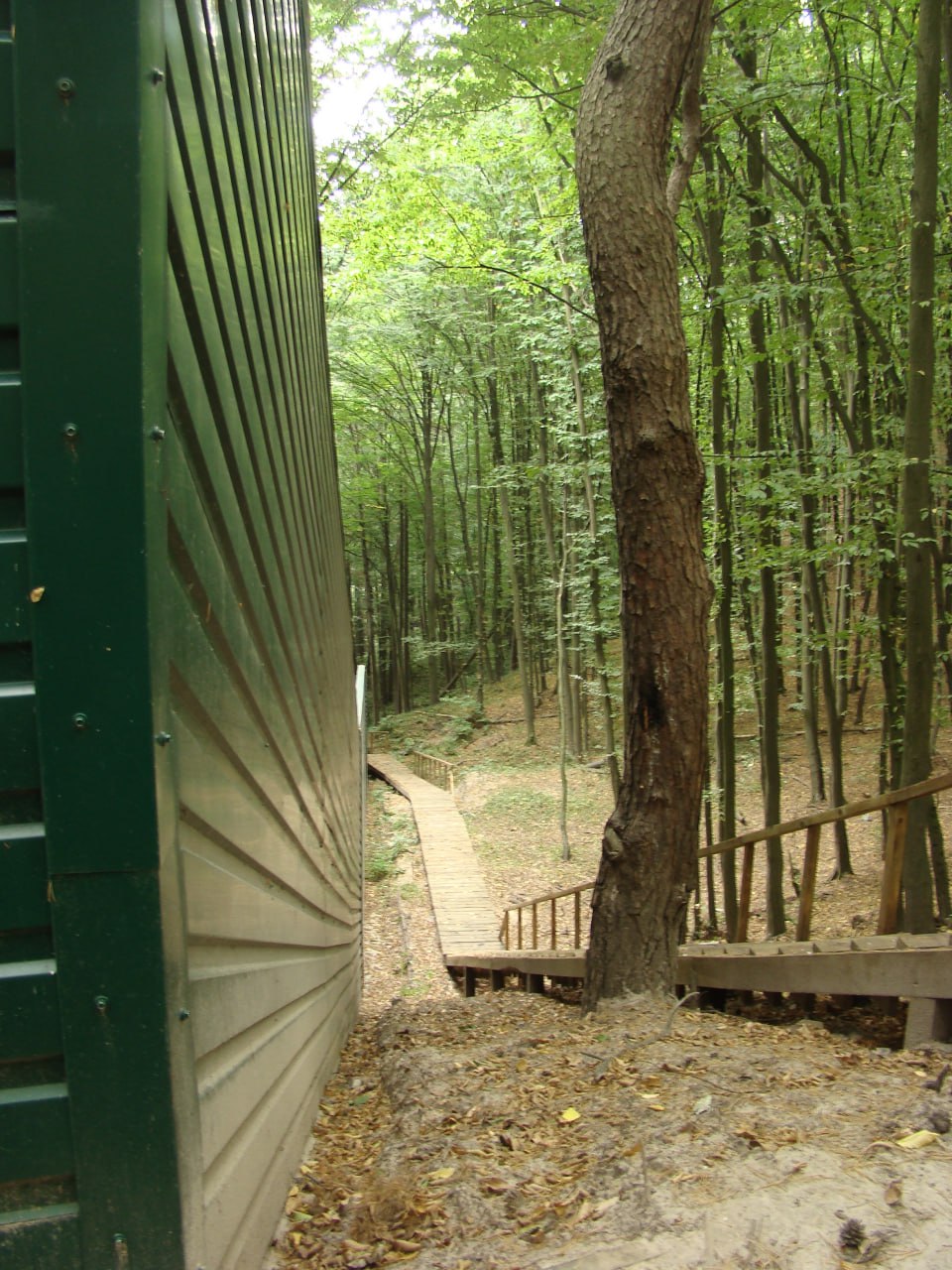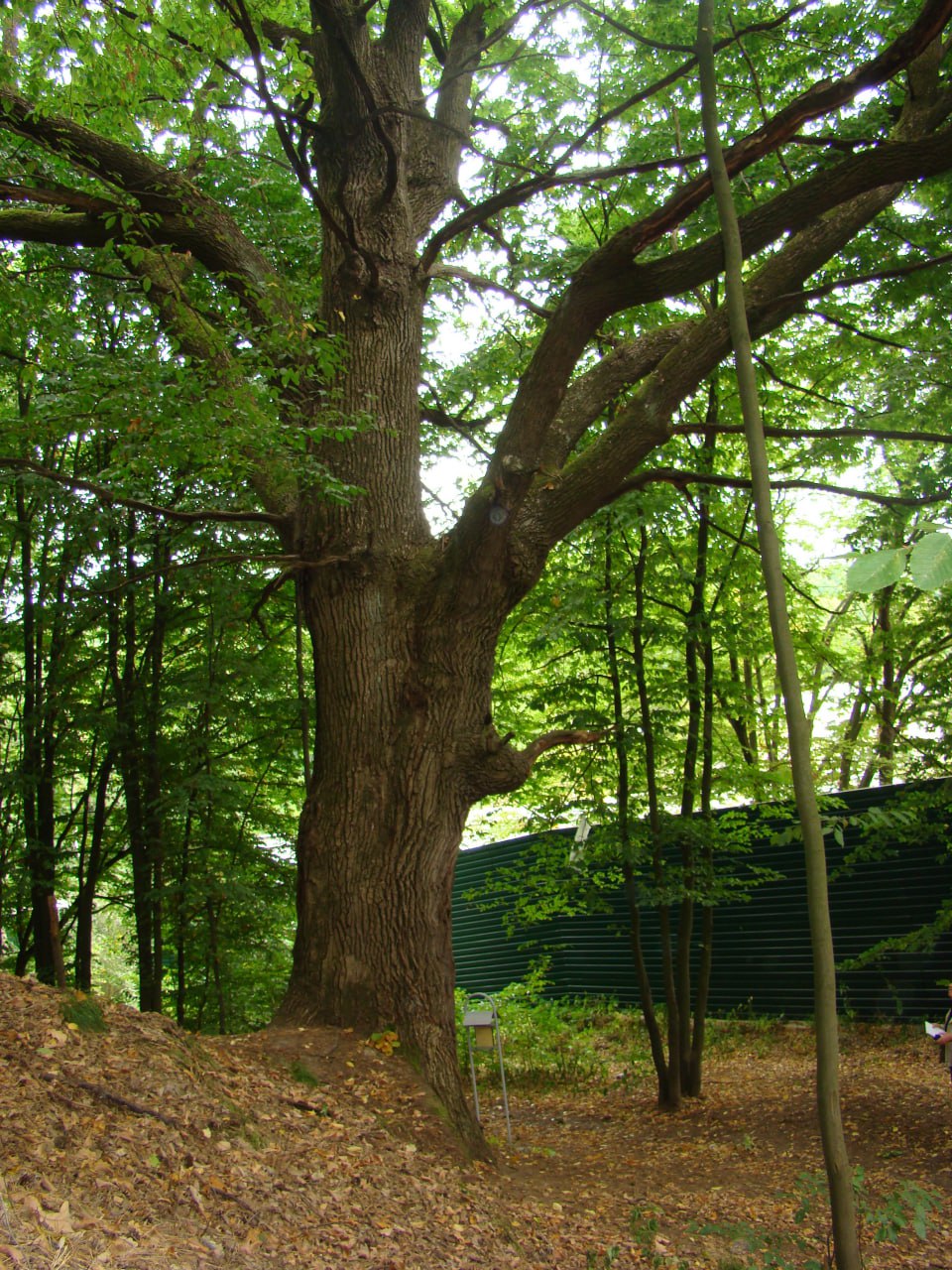The former private residence of Viktor Yanukovych, located in the village of Novi Petrivtsi, is the Park-monument of gardening art of national significance “Mezhyhirya”
This protected area remains shrouded in mysteries that date back to ancient times. One of them is about the princely library.
 7
7 How to find the treasures?
According to some assumptions, the library of Prince Yaroslav the Wise was hidden in the underground chambers of the Mezhyhirya Monastery (which has long been destroyed). There are reports that in the 1930s, during the construction of government dachas, builders stumbled upon a mysterious “stone sack” – it contained many parchment books. Some of these books were said to be adorned with embossing and gilded paintings. Where did this treasure go? The locals of Novi Petrivtsi told me they had seen fragments of an ancient map indicating the “approaches” to the princely treasures. Supposedly, this plan has a “landmark” related to the oaks in the area. However, it is very difficult to find the hidden treasures if up to a thousand ancient oaks were destroyed during the construction of the party dachas!
 8
8  9
9 Another mystery is the Cossack gold. Once, old Cossacks lived out their days at the monastery. Their graves were also here. Allegedly, Cossack gold was buried in these areas. In 1934, gravestones and Cossack crosses were thrown into the Dnipro River by a decision of the Politburo of the Central Committee of the Communist Party of the Ukrainian SSR. The hilly terrain was leveled with bulldozers. A year later, state dachas for the highest officials were built here. Over the years, party leaders of the republic resided here: Kosiор, Petrovskyi, Zatonskyi, Postyshev, Liubchenko, Balitskyi, Khrushchov, Kyrychenko, Pidhornyi, Korotchenko, Shelest, Shcherbytskyi.
 0
0 Shcherbytskyi didn't like this dacha
Only the Bell Well remains from the monastery complex. Next to the spring stands an old oak, known as the "Shevchenko oak." By the way, since 1935, historians and archaeologists have not been allowed to the territory of the former Mezhyhirya Monastery, where an unexplored cultural layer may remain, as stated in public sources.
 1
1 During communist times, materials about the construction of state dacha No. 1 were kept in the “special folder of the Politburo of the Central Committee of the Communist Party of Ukraine.”
When Volodymyr Shcherbytskyi took charge of the Ukrainian SSR, the pre-war house where party bigwigs used to stay was demolished in Mezhyhirya. A two-story “cottage” was built for Shcherbytskyi. However, as Ninel Shcherbytska, the wife of Boris Shcherbytskyi, the brother of the communist leader of Ukraine, once told me, he did not like to rest at dacha No. 1 in Novi Petrivtsi, claiming it felt cold. He preferred to stay at the state dacha in Puscha-Vodytsia.
 2
2 However, it was in Mezhyhirya that Shcherbytskyi hosted Margaret Thatcher during her official visit to the country. The meeting between the General Secretary of the Central Committee of the CPSU Mikhail Gorbachev and the Chancellor of the Federal Republic of Germany Helmut Kohl also took place in Mezhyhirya. Later, President Leonid Kuchma received foreign ambassadors at the Mezhyhirya residence. During official visits to Ukraine, some leaders of Western countries also stayed here. At one time, this dacha was rented by the Russian ambassador to Ukraine.
A simple fence and silent security
My first journalistic journey to Mezhyhirya took place in 1997. What caught my attention? Already in Novi Petrivtsi, along the road leading to the residence, there were road signs, the so-called “bricks.” Thus, simple mortals were not allowed here.
 3
3 The main gate was wooden, about two meters high, and did not stand out in any special way. Similar gates can be found in many villages. The fence was also wooden, apparently dating back to Soviet times. It was only later that Yanukovych surrounded himself with towering, monstrous fences.
Back in 1997, there was also an electric doorbell button near the gate. When I asked the civilian security guard questions, he revealed no secrets:
“What do I guard? I don’t know. Who lives here? I won’t say,” he replied.
He claimed that there was nobody here. However, I knew for sure that the government had leased the house in Mezhyhirya to the Russian embassy. So I was curious whether the payment for such a lease was fair and objective. Why such a privilege for a Russian diplomat? Moreover, I wanted to check the rumor that high-ranking officials from the government and the presidential administration loved the Mezhyhirya sauna and often “improved” their health here for free. But Mezhyhirya always strictly guarded its secrets.
 4
4  5
5 Among the villagers, I managed to find former workers of the state dacha during the USSR period. They all recounted how they always feared being seen by the “master,” and everyone was instructed to “not stand out”... (And it was the same during Yanukovych’s time!). Once, party leader Khrushchov saw the staff hiding from him and reproached the security:
“Why are they running away? I’m not a wild beast!”
They built the “Khonka” with grandeur
When Yanukovych settled in the residence, I visited Novi Petrivtsi again. The area of the special dacha felt like a grand construction project. A strict security system had already been established, with strict restrictions for accidental “tourists” who had “lost their way” in this corner. It became clear that a superbuilding for Yanukovych – the “Khonka” – was being erected here. Perhaps they were also searching for ancient treasures. Who knows...
 6
6 What do I remember about the Mezhyhirya residence in 2009? Having been here, I saw powerful construction works through the fence near the Bell Well (this is the back side of the residence). Trucks were constantly arriving on the premises, and workers were milling about, drilling machines were at work… Through the gates, I could see a farm with running ostriches in the pen… I was struck by the green fence made of profiled sheets about five meters high, along which (in the forest zone) wooden paths were made for the guards, and there were steps with railings on the steep slopes. The guards wore bulletproof vests and carried automatic weapons. And almost at every turn, there were surveillance cameras. It was impossible to reach the sea along the fence. Paths were blocked everywhere. It was evident that construction works were ongoing in the area. Many elite estates had been built next to the residence, blocking all paths to the reservoir.
Pensioner Olga Maksimenko, a resident of Novi Petrivtsi, told me:
“My village house is not far from this ‘royal dacha.’ We suspected that there, behind the tall fence, was a rich life. But to ‘live so richly’ that it would be like choking, as people say...”
In 2002, Viktor Yanukovych settled in Mezhyhirya. In 2007, the residence was transferred to him as private property through a series of dubious maneuvers. Officially, Yanukovych leased land of 1.8 hectares with a house of 620 square meters. The rest of the territory was under the supervision of LLC “Tantalit” (129 hectares) and the charitable foundation “Revival of Ukraine” (7.6 hectares), on the territory of which Yanukovych claimed his “club house” was located. All this was a kind of facade to hide the stolen territory.
 7
7 Shaher-Maher – and the special dacha in the “pocket”
Previously, the government residence “Mezhyhirya,” covering 136 hectares, was part of the state recreation complex “Puscha-Vodytsia.” The General Prosecutor's Office explained on its website that in 2007 “Mezhyhirya” was alienated from state ownership based on a swap agreement made between the state company PJSC “NAK Nadra Ukraine” and